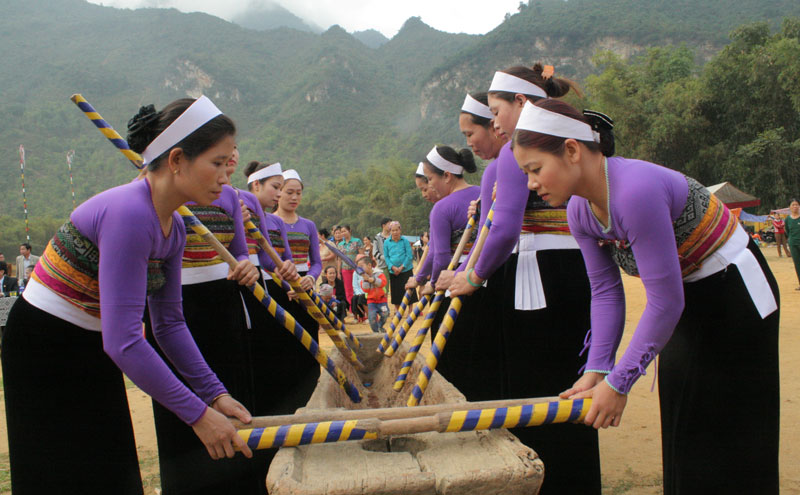


 Cultural
values of Mong ethnic minority group in the communes of Hang
Kia and Pa Co, Mai Chau have been preserved and developed to boost tourism.
Cultural
values of Mong ethnic minority group in the communes of Hang
Kia and Pa Co, Mai Chau have been preserved and developed to boost tourism.
About 60 percent of the district’s population are Thai ethnic minority people whohave original traditional culture characteristics, from architecture of stilt houses to how they decorate home, weaving, costumes and ways of communication.
The locals have had their awareness raised about the importance of preservation of cultural values with around 85 percent of Thai families still living in stilt houses. Traditional weaving has been restored with the establishment of many brocade weaving groups and cooperatives.
The district has also developed regulations managing tourism activities and asked local tourist services providers in villages, such as Pom Coong, Van and Lac, to engage in conservingthe traditional culture.
In Hang Kia and Pa Co where 99 percent of the population are Mong people, traditional crafts such as hand weaving, brocade embroidering, indigo dyeing and blacksmithing have been restored and preserved.
The conservation of traditional cultural values of Thai and Mong ethnic minority communities have helped improve Mai Chau’s attractiveness in tourists’ eyes.
The district has licensed 15 tourism and commercial projects with a combined investment of close to 1.2 trillion VND, of which many operating profitably, such as Mai Chau Ecolodge and MaiChau Hideaway. It is now home to 146 lodging facilities, including 12 hotels, 28 hostels and 106 homestays.
Mai Chau has seen tourist arrivals growing about 3.23 percent annually, with over 21.9 percent increase in foreign visitors, and revenue from tourism averaging 103 billion VND per year.
The district sets to become a more attractive, friendly and safe tourist destination in 2025. To this end, it is working to reform public administrative services and attract more investment in tourism. It also prioritises large-scale projects in key locations and encourages investment in building high-end hotels, resorts, restaurants and entertainment and recreation centres to create added values for the local tourism industry.
Additionally, the district has paid greater attention to developing festival-related and comminity-based tours and those to craft villages./.